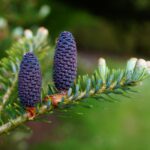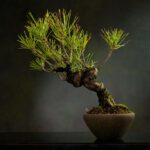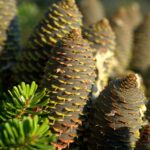All About the Norway Maple Tree Leaf and Its Impact
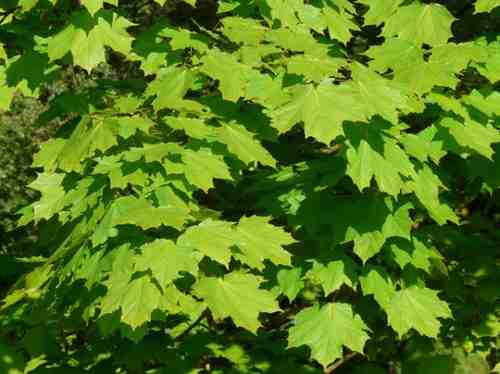
Have you ever really looked at a Norway maple tree leaf? It’s more than just a pretty green thing that turns yellow in the fall. This leaf, and the tree it comes from, actually have a big impact on our yards and local environments. Let’s dig into what makes this particular leaf so unique, from its basic shape to how it changes colors, and even how it affects other plants around it.
Key Takeaways
- Norway maple tree leaves have a distinct shape and milky sap, helping you tell them apart from other maples.
- These leaves go through a clear seasonal change, starting green and turning yellow in the fall.
- The Norway maple tree leaf can impact other plants by creating dense shade and possibly releasing chemicals that stop other things from growing.
- Leaf issues like scorch or tar spot can really mess with how a Norway maple tree leaf works and how healthy the tree is.
- Managing Norway maple tree leaves, especially when they drop, is something to think about for yard care and local wildlife.
What Is a Norway Maple Leaf? Key Identification Features
So, you’re trying to figure out if that tree in your yard is a Norway maple? Let’s break down the key things to look for in its leaves. It’s not rocket science, but knowing what to look for makes all the difference.
The Norway maple leaf is palmate, meaning it has several lobes (usually five) that radiate from a central point, much like a hand. The leaves are typically 4 to 7 inches wide, which is a decent size, bigger than some other maple leaves you might find. One of the first things I learned was that air quality improvement is a big benefit of these trees.
Here’s a quick rundown of what to keep in mind when you want to know how to recognize the Norway maple leaf shape:
- Size: Generally medium to large, around 4-7 inches wide.
- Shape: Palmate with 5 lobes.
- Color: Usually a vibrant green, turning yellow in the fall (though some cultivars can be purple!).
One trick I found helpful is to compare it to a sugar maple leaf. Norway maple leaves tend to be a bit broader. Plus, the sinuses (the spaces between the lobes) are more rounded than the sharper, U-shaped sinuses of a sugar maple. It’s all about the details!
Another thing to note is that Norway maples tend to leaf out earlier in the spring compared to other maples. So, if you see a maple tree with leaves popping out way before the others, there’s a good chance it’s a Norway maple. And in the fall, they usually turn a pale yellow. The sweet birch leaf is also known for its color change in the fall.
Leaf Anatomy: Size, Shape & Lobes of Acer Platanoides
Okay, let’s talk about the Norway maple leaf. It’s not just any leaf; it has some pretty specific features. If you’re trying to figure out what kind of tree you’re looking at, paying attention to these details is key.
First off, size. These leaves can get fairly big, sometimes reaching up to 7 inches across. That’s a decent-sized hand! The shape is generally described as palmate, which means it resembles a hand with spread-out fingers. Now, let’s get into the lobes.
Norway maple leaves typically have five distinct lobes. These lobes are pointy, and they have a few teeth along the edges, but not a ton. The sinuses (the spaces between the lobes) are rounded, which is a good thing to notice.
The overall structure of the leaf contributes significantly to its function, allowing for efficient photosynthesis and gas exchange. Understanding these features helps in identifying the tree and appreciating its role in the ecosystem.
Here’s a quick rundown:
- Size: Up to 7 inches wide
- Shape: Palmate (hand-like)
- Lobes: Usually five, with pointed tips and rounded sinuses
Knowing these characteristics will help you spot a Norway maple leaf in no time. It’s all about paying attention to the details.
Let’s move on to how to tell it apart from a sugar maple, which can be a bit tricky. The milky sap is a good indicator.
Distinguishing from Sugar Maple: Milky Sap & Petiole Clues
Okay, so you’re staring at a maple leaf and wondering if it’s a Norway maple or a sugar maple. They can look pretty similar, but don’t worry, there are a couple of easy ways to tell them apart. The biggest giveaway? The sap.
If you break off a leaf stem (the petiole) and see a milky white sap oozing out, you’ve got yourself a Norway maple. Sugar maples, on the other hand, have clear sap. It’s like the tree is giving you a little signal.
Another thing to look at is the petiole itself. Norway maple petioles tend to be longer than those of sugar maples. It’s not a foolproof method, but it can be another clue in your maple-identifying adventure. Also, Norway maples tend to leaf out earlier in the spring than sugar maples.
It’s worth noting that this sap test works best during the growing season. In late fall, when the trees are pulling nutrients back into their trunks, the sap might not be as obvious.
Here’s a quick rundown:
- Sap: Milky white (Norway maple) vs. Clear (Sugar maple)
- Petiole: Generally longer (Norway maple) vs. Shorter (Sugar maple)
- Fall Color: Usually yellow (Norway maple) vs. Orange/Red (Sugar maple)
Keep in mind that there are also different cultivars of Norway maples, some with dark-purple leaves. These can throw you off if you’re only looking at leaf color. So, always check for that milky sap! If you’re thinking about planting a tree, consider a native maple like the red maple (Acer rubrum) or silver maple (Acer saccharinum).
Seasonal Changes: From Green to Yellow in Fall Foliage
Okay, so the Norway maple isn’t exactly winning any awards for fall color variety, but it does something. Most of the time, you’re going to see a pretty standard yellow. Not much in the way of reds or oranges like you’d get with a sugar maple. It’s reliable, I’ll give it that. You know what you’re getting.
The leaves transition from that vibrant green we see all summer to a pale to bright yellow in the autumn months.
It’s a pretty straightforward process. As the days get shorter and temperatures drop, the tree starts to shut down for the winter. Chlorophyll, which makes the leaves green, breaks down, and the yellow pigments that were always there become visible. Simple as that.
I remember one year, we had a really early frost, and all the Norway maples turned yellow almost overnight. It was kind of shocking. One day, green, the next, BAM! Yellow everywhere. It wasn’t the most exciting fall display, but it was noticeable.
Here are a few things to keep in mind about the Norway maple’s fall foliage:
- The color change is usually pretty uniform across the tree. You won’t see a lot of variation from branch to branch.
- The leaves tend to stay on the tree a bit longer than some other maples. This can be good if you like having some color in your yard for a few extra weeks, but it also means more leaves to rake later on. Speaking of which, you might want to check out some soil stability tips to help with erosion from all those leaves.
- Don’t expect any surprises. Yellow is the name of the game. If you’re looking for a tree with a more dramatic fall display, the Norway maple probably isn’t it.
Leaf Phenology: Early Leaf Out and Late Drop Traits
Norway maples are known for their extended growing season, and a big part of that comes down to their leaf phenology – when their leaves appear and disappear. They’re early risers and late sleepers when it comes to foliage.
Norway maples tend to leaf out earlier in the spring and drop their leaves later in the fall compared to many native species. This gives them a longer period for photosynthesis, which can contribute to their competitive advantage.
Think about it: while other trees are still waking up from winter, the Norway maple is already soaking up the sun. And when autumn rolls around, it’s still holding onto its leaves while others are bare. This extended season can give them an edge.
- Early leaf out allows them to capture sunlight before other trees.
- Late leaf drop extends their photosynthetic period.
- This longer growing season contributes to their overall growth and spread.
The timing of leaf out and leaf drop can be influenced by a number of factors, including temperature, sunlight, and water availability. These factors can vary from year to year, so the exact timing can fluctuate. However, the general trend of early leaf out and late leaf drop remains consistent for Norway maples.
This extended growing season has implications for the surrounding ecosystem. For example, the dense shade created by the Norway maple’s foliage can impact understory plants that rely on sunlight. It also affects nutrient cycling and soil conditions, which we’ll get into later. Their leaf habits have a ripple effect on everything around them.
Common Leaf Disorders: Scorch, Anthracnose & Tar Spot
Norway maples, like any tree, can suffer from various leaf disorders. These issues can range from cosmetic problems to more serious conditions that impact the tree’s overall health. Let’s take a look at some of the common ones.
Scorch
Leaf scorch is a common problem, especially during hot, dry periods. It’s basically what it sounds like: the edges of the leaves turn brown and crispy, as if they’ve been burned. This happens when the tree can’t get enough water to its leaves, causing the tissue to dry out and die. Factors like drought, compacted soil, or root damage can all contribute to scorch. While it doesn’t usually kill the tree, repeated scorch can weaken it and make it more susceptible to other problems.
Anthracnose
Anthracnose is a fungal disease that can affect many types of trees, including Norway maples. It usually shows up in the spring, during cool, wet weather. Symptoms include irregular brown spots on the leaves, which can sometimes merge to form larger blotches. In severe cases, it can cause premature leaf drop. While anthracnose can look alarming, it’s rarely fatal to established trees. Proper tree trimming and good air circulation can help prevent it.
Tar Spot
Tar spot is another fungal disease that’s pretty easy to identify. It causes raised, black spots on the leaves that look like someone splattered tar on them. These spots are usually about 1/4 to 1/2 inch in diameter and appear in late spring or early summer. Tar spot is mostly a cosmetic issue and doesn’t usually cause significant harm to the tree. While unsightly, it rarely warrants any treatment. Think of it as more of an aesthetic nuisance than a serious threat. You can always rake up and dispose of fallen leaves to reduce the amount of fungus that overwinters and potentially reinfects the tree the following year.
Dealing with leaf disorders can be frustrating, but understanding what’s causing the problem is the first step. Often, simply improving the tree’s growing conditions – like ensuring adequate watering and proper soil drainage – can make a big difference. If you’re concerned about a specific issue, it’s always a good idea to consult with a tree service in New Jersey for expert advice.
How Leaf Diseases Affect Photosynthesis & Tree Health
Leaf diseases can really mess with a Norway maple’s health. It’s like a domino effect – sick leaves mean less photosynthesis, and that means the tree can’t make as much food. And when a tree is stressed, it becomes even more vulnerable to other problems. It’s a bummer, but understanding how these diseases work is the first step in keeping your trees healthy.
Leaf diseases directly reduce the surface area available for photosynthesis, impacting the tree’s overall energy production.
Think of it like this:
- Reduced photosynthesis: Sick leaves can’t do their job as well.
- Weakened tree: Less energy means the tree is weaker and more susceptible to other issues.
- Increased vulnerability: A stressed tree is an open invitation for pests and other diseases.
It’s important to keep an eye on your Norway maples. Early detection of leaf diseases can make a big difference. Simple things like raking up fallen leaves in the autumn can help prevent the spread of fungal spores. A healthy tree is a happy tree, and a happy tree makes for a healthier environment.
For example,leaf spot diseases can cause significant damage to tree leaves, hindering photosynthesis and the tree’s ability to produce energy for growth and sustenance.
Impact on Understory Plants: Dense Shade from Foliage
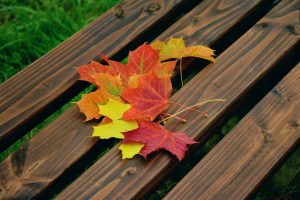
Norway maples are tough trees, but their success comes at a cost to other plants. One of the biggest issues is the dense shade created by their leaves. This shade dramatically reduces the amount of sunlight reaching the forest floor, making it hard for many native plants to survive. It’s a real problem for forest diversity.
The dense canopy of Norway maples significantly reduces light availability for understory plants.
Think about it: wildflowers, ferns, and young trees all need sunlight to grow. When a Norway maple takes over, it blocks out much of that light, essentially starving these plants. This can lead to a decline in the variety of plant species in an area. The dense canopy is a big deal.
The impact isn’t just about light. Norway maples also have shallow root systems that compete with other plants for water and nutrients. Plus, they release chemicals into the soil that can inhibit the growth of other plants. It’s a triple whammy for the understory.
Here’s a quick look at how Norway maples affect understory plant life:
- Reduced sunlight penetration
- Increased competition for resources
- Potential allelopathic effects (chemical inhibition)
This table shows a comparison of plant diversity under Norway maples versus native maples:
| Feature | Under Norway Maple | Under Native Maple |
| Species Richness | Lower | Higher |
| Light Levels | Lower | Higher |
| Soil Moisture | Lower | Higher |
It’s not just about the number of plants, but also the types of plants that can survive. Shade-tolerant species might do okay, but many of the plants that provide food and habitat for wildlife struggle. The Norway maples produce a lot of seeds.
Allelopathy: Do Norway Maple Leaves Inhibit Other Plants?
Okay, so let’s talk about allelopathy and Norway maples. It’s a fancy word that means a plant releases chemicals that mess with other plants nearby. The big question is: Are Norway maple leaves doing this? Some research suggests they might be, and it could be one reason why they’re so good at taking over.
Think about it: you’ve got this tree that’s already hogging all the sunlight because of its dense canopy dense canopy, and then it’s also poisoning the soil to keep other plants from growing. That’s a pretty effective strategy for dominating an area.
It’s not a simple yes or no answer, though. A lot of factors are at play. Soil type, rainfall, and the specific species of plants nearby all influence whether allelopathy has a noticeable effect. Plus, it’s tough to isolate the impact of allelochemicals from other things like competition for water and nutrients.
Here’s what we know:
- Some studies have found fewer plant species growing under Norway maples compared to native maples.
- Lab tests have shown that extracts from Norway maple leaves can inhibit seed germination in some plants.
- The specific chemicals responsible for this allelopathic effect haven’t been fully identified yet, but researchers are working on it.
It’s like a plant turf war, but with chemical weapons. More research is needed to fully understand the extent of this allelopathic effect, but it’s something to consider when thinking about the impact of Norway maples on our ecosystems.
Effects on Soil Quality & Nutrient Cycles under the Canopy
Okay, so let’s talk about what happens to the soil when a Norway maple sets up shop. It’s not always a pretty picture, and it impacts the other plants trying to make a living nearby. These trees can change things up.
Norway maples can alter soil pH and nutrient availability, impacting the health of surrounding ecosystems.
Think of it this way: the leaves fall, they decompose, and that process changes the soil composition. It’s like a slow, subtle takeover.
- The dense canopy reduces sunlight, which affects decomposition rates.
- Leaf litter can acidify the soil over time.
- Nutrient cycling gets disrupted, favoring the Norway maple.
It’s important to consider the long-term effects of Norway maples on the soil. While they might not seem like a big deal individually, their collective impact can lead to significant changes in the forest floor, affecting everything from microbial communities to the types of plants that can survive.
And it’s not just about the leaves. The roots play a role, too. They’re shallow and competitive, hogging resources that other plants need. If you need commercial tree services, consider the impact on the soil.
Here’s a simplified view of how things can change:
| Factor | Impact |
| Leaf Litter | Alters pH, changes nutrient composition |
| Root Competition | Reduces water and nutrient availability |
| Shade | Slows decomposition, affects plant growth |
It’s a complex web of interactions, but the bottom line is that Norway maples can really shake things up for the soil and the plants that depend on it. Understanding this is key to managing their spread and preserving the health of our forests. If you’re thinking about tree cutting, consider the long-term effects on the soil.
Wildlife Impact: Leaf Density & Limited Habitat Diversity
Norway maples, while seemingly beneficial, can throw a wrench into the local ecosystem. Their dense foliage has a pretty big impact on wildlife, and not always in a good way. It’s something to think about when you see these trees around.
One of the main issues is the sheer density of their leaves. They create a lot of shade, which impacts what can grow underneath. This, in turn, affects the animals that depend on those plants.
- Reduced Sunlight: The dense canopy blocks sunlight, hindering the growth of understory plants.
- Altered Habitat: Changes in plant life lead to a less diverse habitat for insects and other small creatures.
- Food Chain Effects: Fewer insects can mean less food for birds and other animals higher up the food chain.
The heavy shade cast by Norway maples can significantly reduce the diversity of plant life on the forest floor. This lack of variety impacts the types of insects and animals that can thrive in these areas, leading to a less balanced ecosystem.
It’s not just about the shade, though. Norway maples also seem to be less appealing to some native insects. A study showed that native sugar maples had more insect damage than Norway maples. This could be one reason why Norway maples are so successful at spreading.
And because Norway maples can change the soil composition, it can affect the forest’s ecosystem in the long run. It’s a complex issue, but understanding the impact of these trees is important for managing our natural spaces.
Management Considerations: Controlling Leaf Drop & Cleanup
Okay, so the Norway maple is beautiful and all, but let’s be real – the leaf drop can be a lot. It’s not just a few leaves here and there; it’s like a golden (or sometimes brown) carpet taking over your yard. And dealing with it? Not always fun. Here’s the lowdown on managing the mess.
Dealing with Norway maple leaves isn’t just about aesthetics. Piles of wet leaves can smother grass, create slippery surfaces, and even contribute to drainage problems. Plus, they can be a breeding ground for pests and diseases if left unchecked. So, a little effort goes a long way.
- Raking: The classic method. Get yourself a good rake (or a leaf blower if you’re feeling fancy) and get to work. It’s good exercise, right? Aim to rake regularly, especially after heavy leaf fall, to prevent thick mats from forming.
- Mulching: Instead of bagging everything up, consider mulching the leaves. You can use a lawnmower with a mulching attachment to chop them up into smaller pieces. These smaller pieces decompose faster and can benefit your lawn by adding nutrients back into the soil. It’s like recycling, but for your yard!
- Composting: If you have a compost bin, Norway maple leaves can be a great addition. Just make sure to mix them with other materials like grass clippings and food scraps to ensure proper decomposition. You’ll get some awesome compost for your garden next year. Remember that managing maple decline is important for the tree’s health.
And if you’re thinking about getting rid of the tree altogether because of the leaf situation, there are a few things to keep in mind. Removing young trees is easier; you can usually pull or dig them out. Mature trees? That’s a whole different ballgame. You might need to call in a professional. One method involves making cuts in the trunk and applying herbicide. Always read and follow the product labels when working with herbicides.
Dealing with falling leaves can be a real chore, but there are smart ways to make it easier. Learn how to keep your yard tidy and reduce the mess. For more easy tips and tricks,visit our website today!
Frequently Asked Questions
What makes Norway Maple leaves special?
The Norway Maple leaf is pretty easy to spot! It’s usually big, about 4 to 8 inches wide, and has five points, kind of like your hand. In the spring, it’s a bright green, but when fall comes, it turns into a beautiful show of yellow, orange, and red. It’s truly a sight to see!
How can I tell a Norway Maple leaf from a Sugar Maple leaf?
You can tell a Norway Maple from a Sugar Maple by looking at the sap. If you break off a leaf stem from a Norway Maple, you’ll see a milky white sap. Sugar Maples, on the other hand, have clear sap. So, if it’s milky, it’s probably a Norway!
What makes Norway Maple leaves so tough?
Norway Maple leaves are super tough! They’re built to handle city life, like dirty air and squished soil. This means they can grow almost anywhere, which is why you see them so often in towns and cities.
How do Norway Maple leaves affect other plants?
Norway Maples grow leaves early in the spring and keep them on late into the fall. This means they create a lot of shade for a long time. This can be tough for smaller plants trying to grow underneath them, as they don’t get much sunlight.
What are some common problems that affect Norway Maple leaves?
Sometimes, Norway Maple leaves can get sick. Common problems include scorch, which makes them look burnt, anthracnose, which causes spots, and tar spot, which looks like black blobs. These issues can make it harder for the tree to make food and stay healthy.
How do sick leaves affect the Norway Maple tree?
When Norway Maple leaves get sick, it’s like the tree gets a tummy ache. It can’t make as much food (photosynthesis), which means it might not grow as well or could even get weaker. Healthy leaves are super important for a healthy tree!
How does the shade from Norway Maple leaves impact other plants?
Norway Maple leaves create a thick shade. This dense canopy can make it hard for other plants to grow underneath because they don’t get enough sunlight. It’s like a big umbrella that blocks out the sun for everything below.
Do Norway Maple leaves stop other plants from growing?
Norway Maple leaves can stop other plants from growing around them. They release chemicals that make it hard for other plants to sprout or thrive. It’s like they’re saying, ‘This is my space!’

